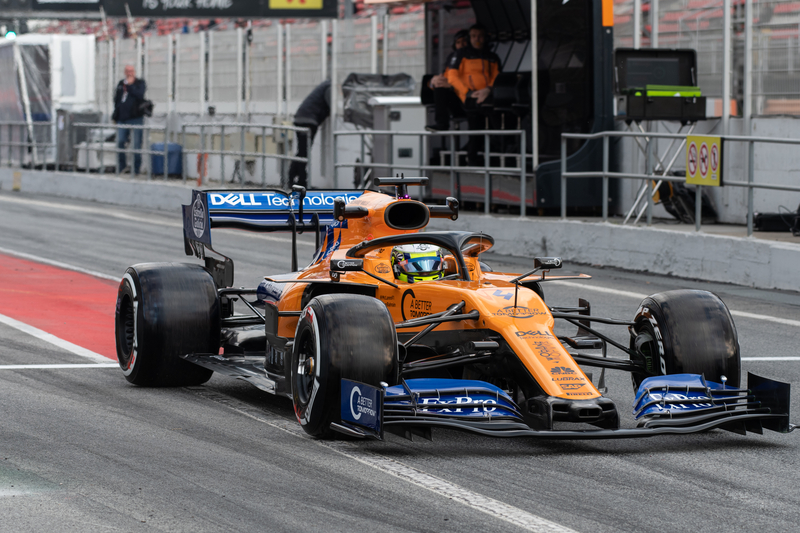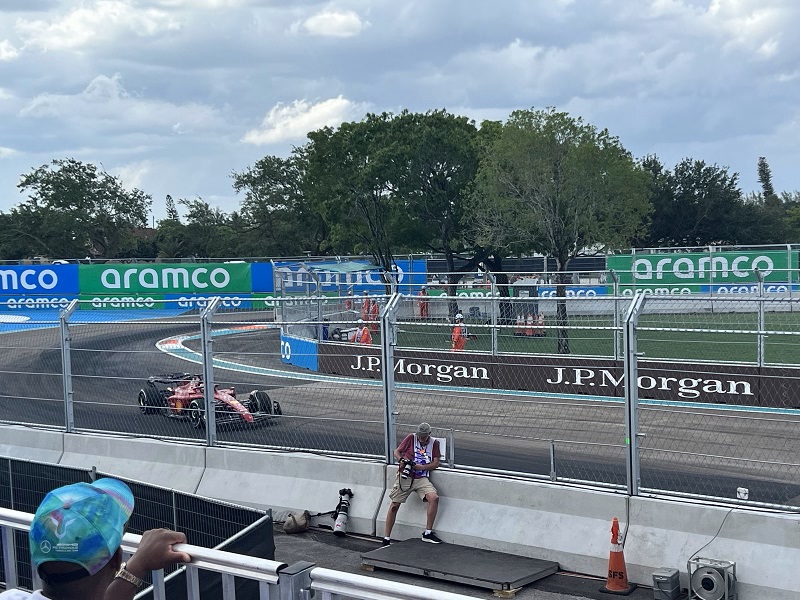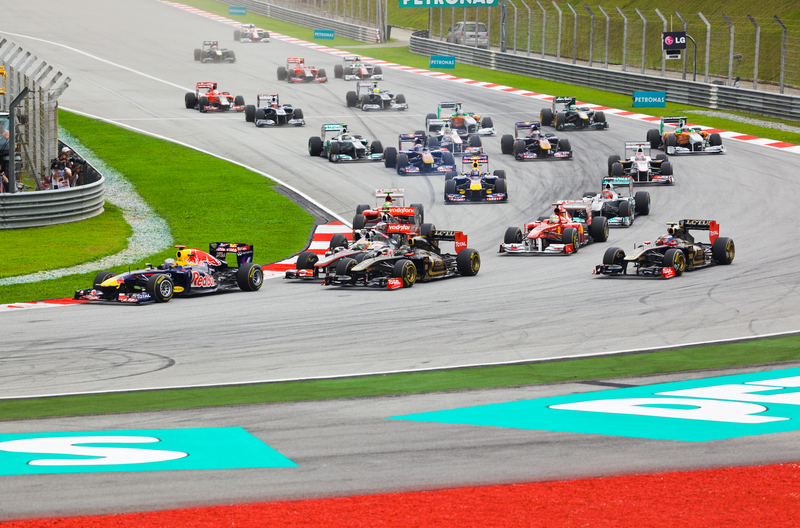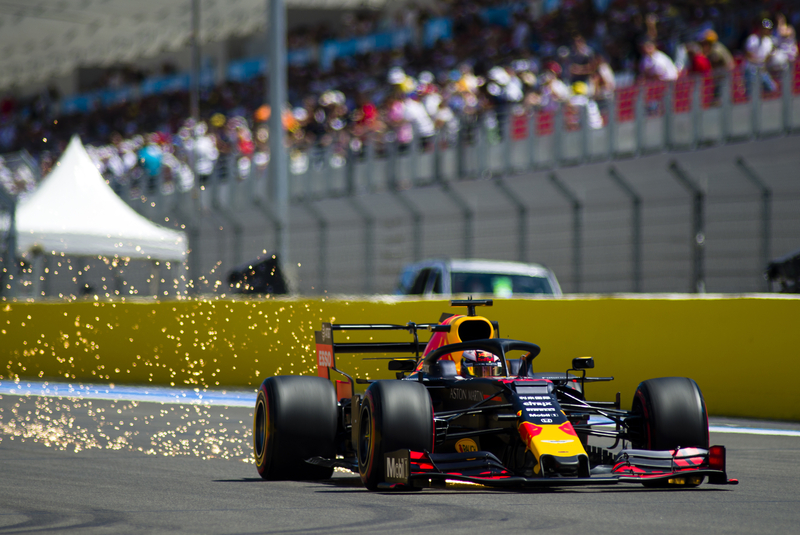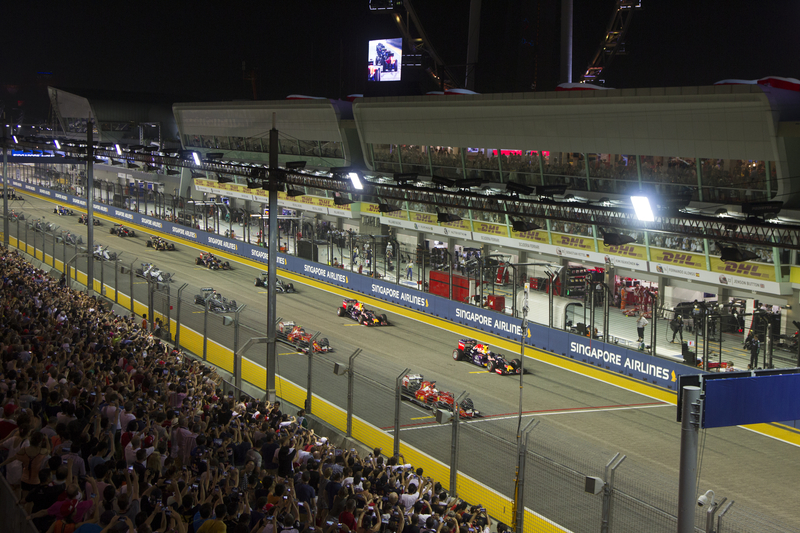Last updated on October 30th, 2023 at 12:26 pm
The halo is a recent safety addition to Formula One, Indycar, and other single-seater motorsport divisions. This wishbone-shaped piece of metal circles the driver’s head, protecting them from debris or impacts with obstacles during collisions. While initially some criticism of adding the halo to Formula 1 cars, most critics have seen the system provide lifesaving protection to drivers.
The halo is a wishbone-shaped piece of metal that circles the cockpit of a single-seater race car. The halo connects in three different places, right in front of the cockpit and just behind it on either side of a driver’s shoulders. It’s made of titanium tubing, making it light but firm.
The halo only adds about 20 pounds of weight to the car. This safety equipment doesn’t integrate with an F1 car’s survival shell or monocoque. Instead, it’s combined with the carbon fibre of the chassis, which helps create a safe cocoon around the driver.
How Does the Design Protect Drivers?
- It prevents drivers from hitting their heads if their vehicle flips upside down during a collision.
- It prevents another car or large piece of debris from falling on a driver if it becomes elevated or airborne.
- The front point of the halo deflects debris that would hit the driver in the face or helmet if it bounces off the front of the nose cone.
All of these are critical, lifesaving functions that keep drivers safe.
When Did Formula One Adopt the Halo?
The halo is a relatively new addition to the safety system used by the FIA to protect F1 drivers. A rule change in 2018 mandated that F1 teams, and all other branches of open-cockpit racing overseen by the FIA, integrate the halo in their vehicles. This rule change means that Formula 2, 3, 4, and E cars have a halo-integrated design.
In the early 2000s, the FIA saw several life-threatening and fatal injuries occur when drivers were hit in the head by debris. In 2009, Felipe Massa, a Ferrari driver, suffered a severe injury when a loose spring hit him in the helmet during the Hungarian Grand Prix. Five years later, Jules Bianchi, driving for Marussia, passed away when his car impacted a recovery vehicle during the Japanese Grand Prix. After that accident, the governing body started testing different methods of cockpit protection before finally adopting the halo in 2018.
Is There Controversy Around the Halo?
When the FIA initially mandated the halo, many drivers and team principals were against the safety device. Some thought that the halo interrupted the look of an F1 car and was an eyesore.
Others, like Mercedes driver Nico Rosberg, who tested the halo during practice before the 2016 Belgian Grand Prix at Spa, worried it would interfere with visibility. Rosberg added after his test that he didn’t notice any trouble driving, as the front part of the halo is relatively narrow. Romain Grosjean was passionately against the halo, going as far as to say he hated it, and the visual distraction caused by the halo made him feel ill.
While many drivers were skeptical about the halo, several supported the new safety equipment. McLaren driver, Fernando Alonso, thought the halo would be a great addition, especially for drivers who flip over during a race. Since the halo could keep the car elevated upside down, it could be essential in providing space between the drivers and the road when a car flips due to an accident, giving them a means of escaping the vehicle safely.
When Has the Halo Been Successful?
Tadasuke Makino became the first driver to see how valuable the halo is. During a Formula 2 race in Barcelona, Makino made contact with rival driver Nirei Fukuzumi. The contact boosted Fukuzumi’s car into the air, forcing it to land on Makino’s car. Fukuzumi’s left-rear tyre came down on top of the halo, which protected Makino from serious injury.
A similar altercation happened during the 2021 Italian Grand Prix at Monza. During a heated battle between Mercedes’s Lewis Hamilton and Red Bull’s Max Verstappen, the two drivers went off at turn 2. The collision lifted Verstappen’s car into the air, causing the right-rear tire to land on top of the halo device, bumping Hamilton on the head. Mercedes’s team principal, Toto Wolff, admitted that he had previously been skeptical of the halo. However, since it protected Hamilton so well, he now recognized its importance.
Finally, one of the most remarkable stories about the halo’s effectiveness occurred during the 2020 Bahrain Grand Prix. During the opening lap, Romain Grosjean lost control of his Haas and crashed into the track’s guardrail on the right side. His vehicle punctured the safety barrier and was torn in half by the metal, causing it to explode. The halo system protected his head as his car crashed through the barrier, allowing him to stay conscious of escaping his burning vehicle safely during the accident. After the Bahrain GP, Grosjean became a staunch supporter of the F1 halo, showing just how impactful the safety measure had become.
Conclusion: What is a Halo in F1?
Since its adoption, the halo has quickly become a much-appreciated safety addition to all F1 cars. While many F1 drivers, engineers, and fans were initially skeptical of the halo, time has shown that this is an essential piece of safety equipment in all race cars.
With F1 adopting the halo, many other racing federations have adopted similar safety measures, including Indycar’s aeroscreen, which provides extra protection for drivers. As drivers saw how useful protecting against life-threatening injuries was, they understood just how vital cockpit protection is in open-wheel racing.
Next time you watch race vehicles circle a track at hundreds of miles an hour, pay attention to the cars. You will notice the halo feature in front of the driver as they race. That device is the halo, and it can help save a life of a driver if they crash.
Similar Posts:
What Does Interval Mean in F1?
Why Do F1 Drivers Get Weighed After Races?
How Many Laps in a NASCAR Race?
What is a Formation Lap in F1?
How Much Do NASCAR Drivers Make?
How Many Cars are in a NASCAR Race?
Greg Kristan, owner of The Stadium Reviews, LLC and TM Blast, LLC, brings his extensive experience visiting over half of the MLB ballparks, along with numerous MLS, NHL, NBA, and NFL venues, to provide in-depth coverage on the bag policy, food options, and parking. He has also been interviewed about his experiences on several sports podcasts.

